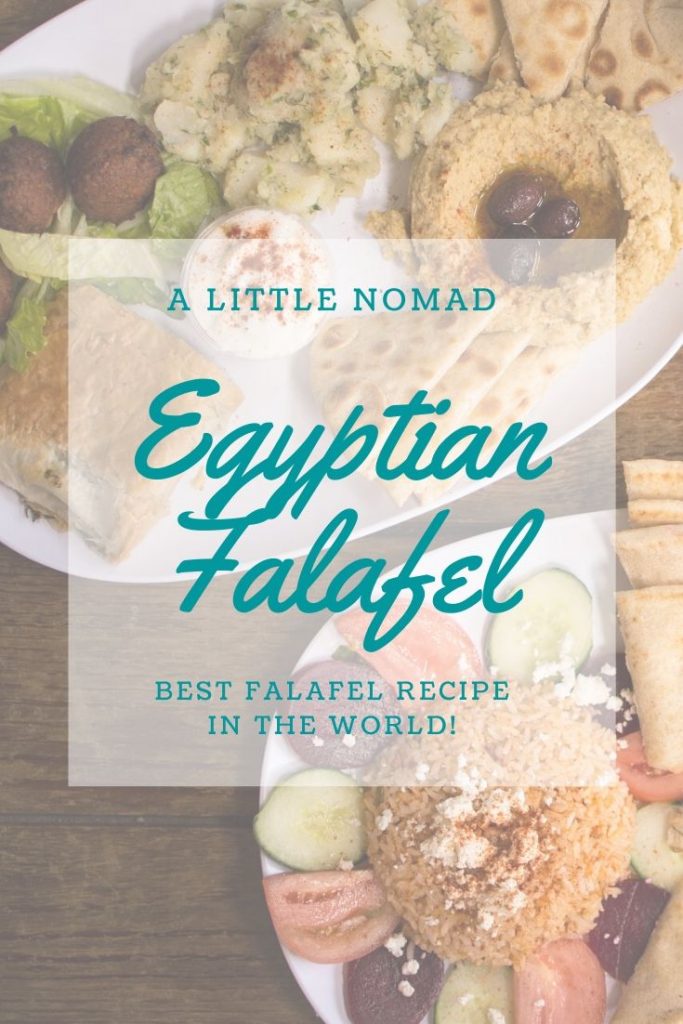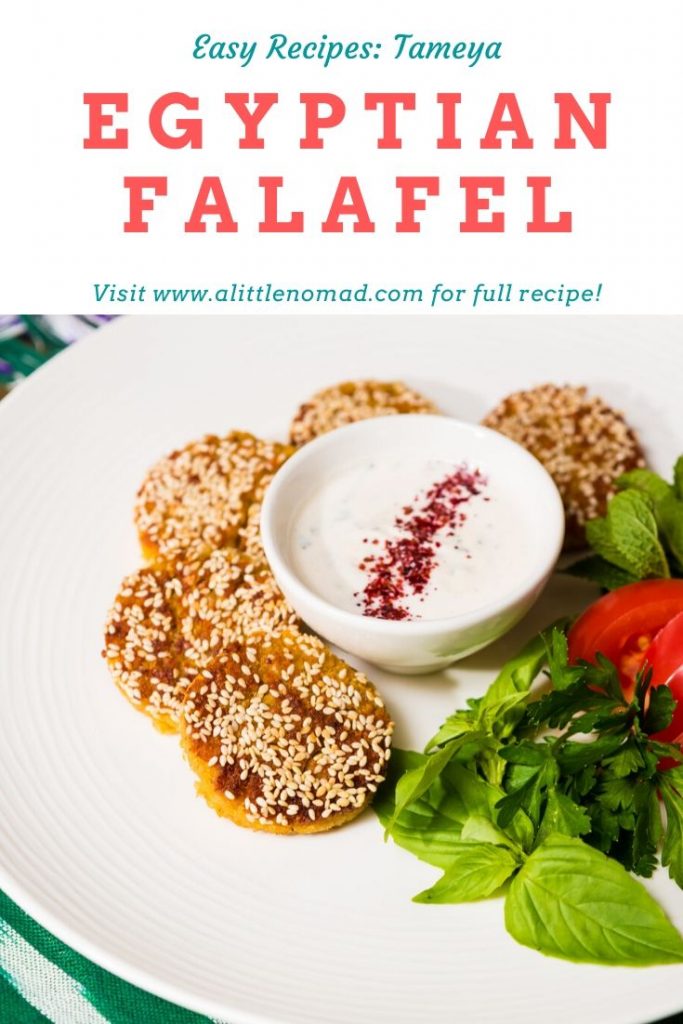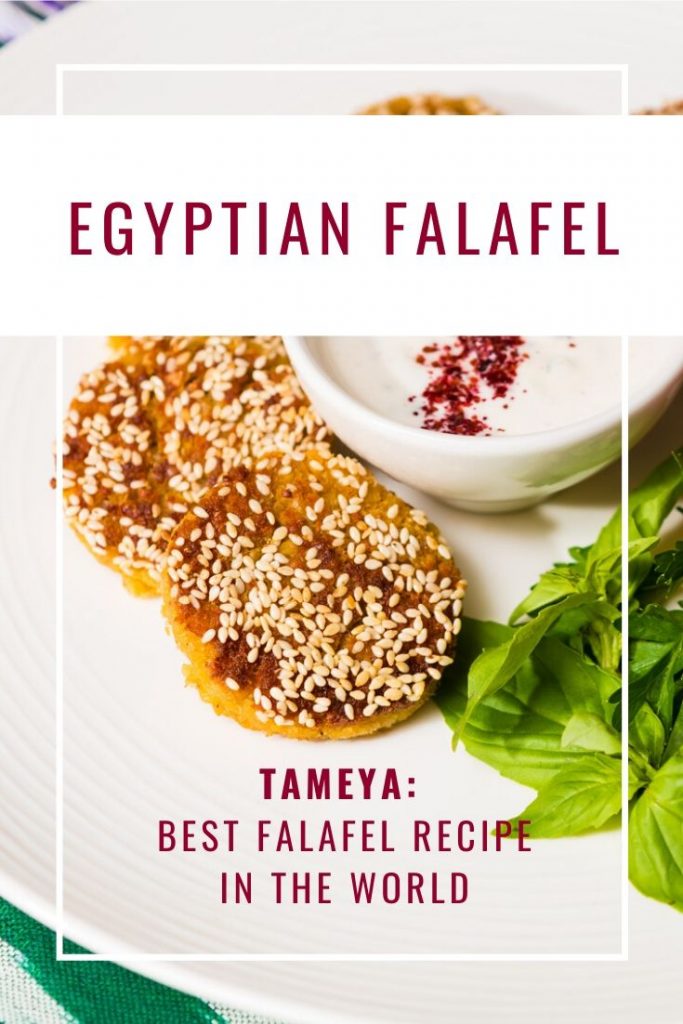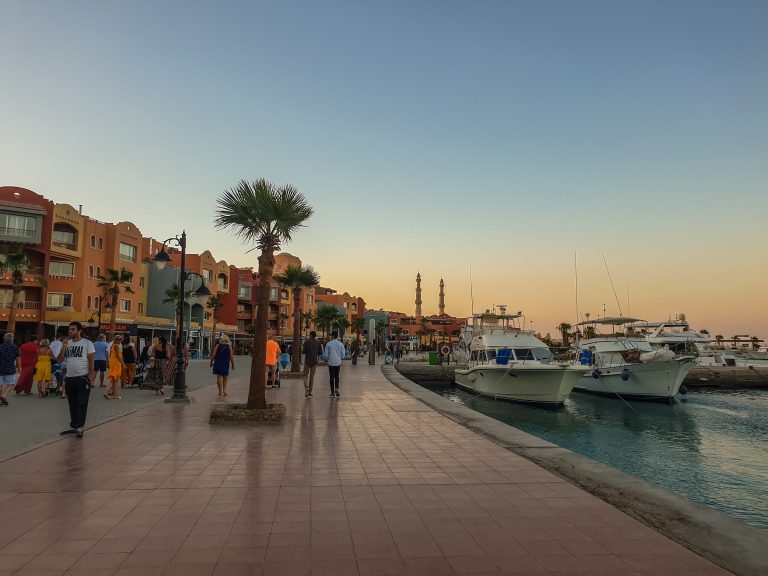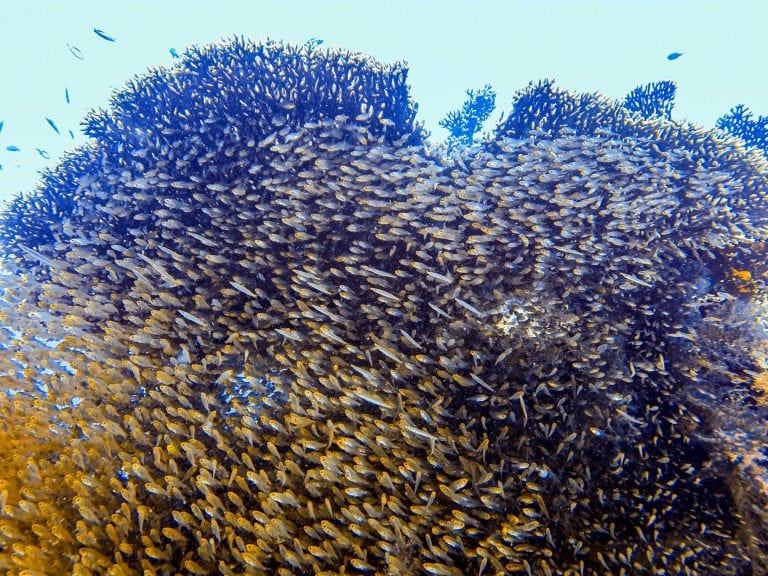Egyptian Falafel Recipe – The Tastiest Tameya Ever!!
Everybody loves falafel, but the Egyptian Falafel (called Tameya) is really one of a kind – unlike any other falafel recipe!
The little chickpea balls are a staple not only in Middle Eastern cuisine, but have become a favorite food all over the world.
So what makes Egyptian Falafel different from any other?
Instead of using chickpeas as a base, Egyptians prefer dried fava beans (broad beans).

In Western countries, these great beans are not as widely spread, but wait till you taste them!
Once you’ve tried fava bean falafel, chances are you can’t get enough of it. You can see, smell and taste the difference.
For many, Egyptian tameya is simply the best falafel in the world!
They’re loaded with greens such as parsley, leek, dill, and cilantro. You will notice that the color of Egyptian falafels is much more vibrant and green than the falafels you’re used to – and the taste?
As flavorful as it gets!

They are also crispier and lighter than the chickpea version.
Egyptian Food in general has a lot of tasty traditional recipes that you should check out, e.g. Koshari, the national dish of Egypt.
Ful medammes, another breakfast staple in Egyptian cuisine, is made from fava beans as well.
Where can you buy fava beans?
2020 Update: I don’t do any affiliate marketing anymore, mostly ’cause I don’t like how Amazon decided to deal with their employees and partners this year. Therefore, I removed all affiliate links – for other sites as well. You know how to google, you’ll find the info yourself.
In Egyptian supermarkets, half a shelve is usually reserved for all sorts of fava beans.
In Europe and North America though, it’s much harder to find them.
What you need are peeled, large, dried fava beans.
They are sometimes labeled habas beans.
You should be able to find them in the bulk section at Whole Foods. Bob’s Red Mill also sells the correct larger, peeled beans.
Or you can order them online.
This is exactly how they should look like for this fava bean falafel recipe:

You need to soak the beans in water for at least half a day, preferably overnight.
You won’t cook them, only pulse them in a food processor before frying or baking, so the soaking is really important.
It also helps get rid of some of the unwanted by-products in the beans that our bodies don’t digest well, which can lead to bloating.
Extra Tips And Variations Of This Tameya Recipe Individualized For Your Taste:

- Falafels are best served with pita bread, tomato, onions.
- Drizzle some tahini over the fava bean balls to give them that little extra!
- If you like it hot, spice up your falafel recipe with some chili/cayenne powder.
- If you’re a sucker for garlic and don’t have any first dates coming up, add as much as you like – up to 10 cloves is fine!
- If there is a lot of liquid from the onion and fresh herbs, you will need some type of flour to bind the falafel dough together. If you want to keep the Egyptian falafel recipe healthy and gluten-free, use garbanzo bean flower (ground chickpeas) instead of white flour.
Meal Prepping: Egyptian Falafel
This fava bean falafel recipe is ideal for meal prepping:
You can simply put the falafel “dough” into freezer bags and defrost only as many as you need for the next meal.
In this case, only add baking soda when you’re actually ready to fry them, don’t freeze with the dough.
Enough said, here comes the greatest falafel recipe of all times:
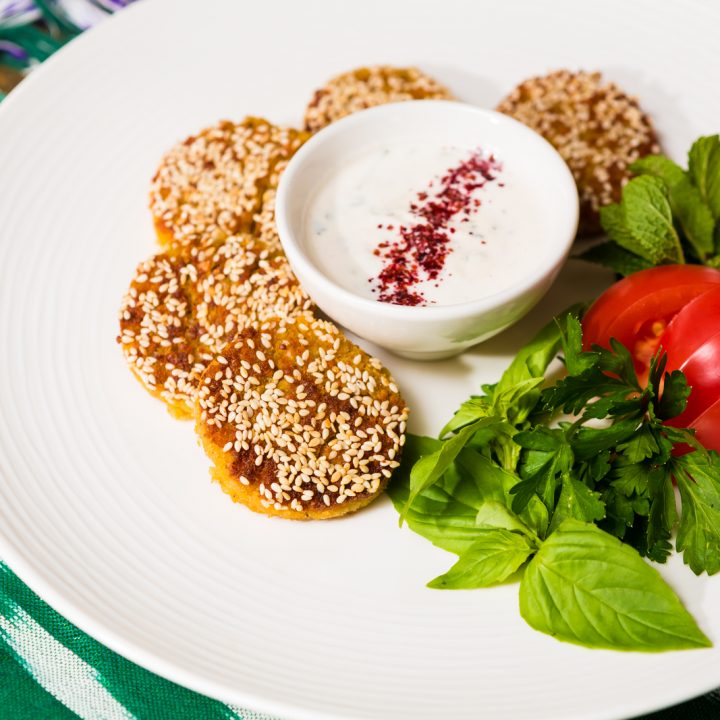
Egyptian Falafel Recipe
Let's make the tastiest falafels in the world: Egyptian fava bean falafels (also called tameya, tamiya or T’aamiya)
This Egyptian falafel recipe is not only vegetarian, vegan and gluten-free, it's also healthy and flavorful.
Falafel makes for a great plant-based protein source, especially important for for vegetarians and vegans.
Ingredients
- 250g dried, split and peeled fava beans (about 2 cups)
- 1 cup fresh parsley, dill, and coriander/cilantro
- 1/2 cup leech
- 1 red onion
- 2 teaspoons salt
- 1 teaspoon pepper
- 1 teaspoon ground cumin
- 5 garlic cloves
- 1 teaspoon baking soda
- vegetable oil for frying
- 1 cup sesame seeds (optional but highly recommended)
Instructions
- Place fava beans in a bowl and let soak for at least 8 hours, ideally overnight. Drain well.
- Put the fresh herbs in a food processor (parsley, dill, coriander/cilantro) and mix for a few seconds.
- Cut the red onion in quarters and add to the mix, as well as the garlic cloves, salt, pepper, and cumin.
- Mix and add the fava beans step by step until everything reaches a smooth, fluffy consistency.
- In the very end, add the baking soda to the mix, but ONLY if you want to fry the falafel balls right away. See tips section for more information.
- Heat the vegetable oil of your choice (sunflower always works) in a skillet until it's very hot. In the meantime, form the fava dough to little falafel balls.
- Piece by piece, add the tameya to the oil and fry until golden brown.
- Drain them well on kitchen towels to remove excess oil.
- Enjoy the best falafel in the world: Egyptian Tameya! Bon appetit!
Notes
To garnish the tameya's with sesame seeds, you have two options.
You could fry the sesame seeds in oil before you bake the falafel balls in it, (until they're toasty), or roll the falafel dough in the sesame seeds and then fry everything together.
Very tasty!
Nutrition Information
Yield 10 Serving Size 1Amount Per Serving Calories 122Total Fat 8gSaturated Fat 1gTrans Fat 0gUnsaturated Fat 6gCholesterol 0mgSodium 615mgCarbohydrates 10gFiber 4gSugar 1gProtein 5g


